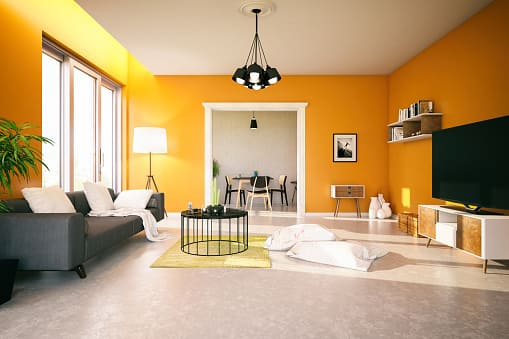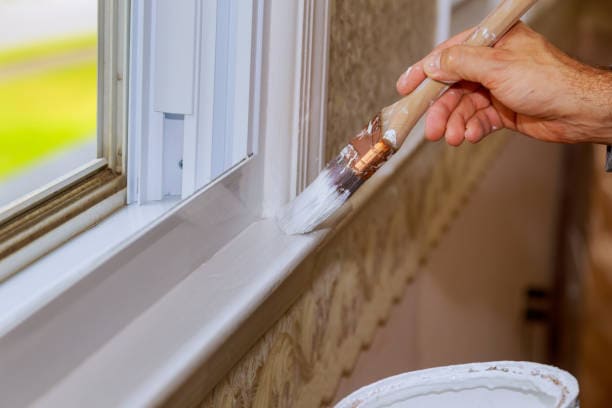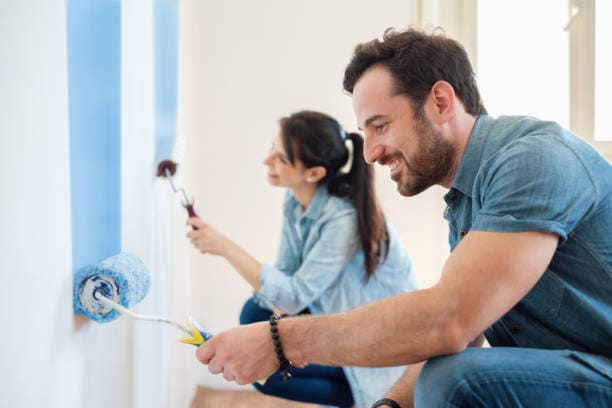If you want to paint your walls, it is essential to understand this 22 most basic knowledge. Painting walls is not very difficult; as long as you master the correct methods and steps, you can also complete this task. This article will introduce you to the 22 essential pieces of knowledge you must know to paint your walls.

Paint brushes and roller brushes are both essential tools for painting walls. Paint brushes can help you apply waterproof paint on the walls, while roller brushes are used to apply oil-based paint. So, when buying tools, you must choose according to the type of paint you are using.

Oil-based paint and water-based paint are two different kinds of paint, and they are used in different ways. Oil-based paints must be applied on dry walls, while water-based paints can be used on wet walls. Therefore, you must choose the type of paint according to your needs.
What Is The Correct Way to Paint A Wall?
Follow the seven steps to paint the wall.
1, Cloth, scrape putty and level the wall

If it is a new house, the walls are generally levelled, but there are individual houses where the walls are not very flat, so it is necessary to put up the Cloth first and then scrape the putty.
The purpose of scraping putty is to level the wall to allow the paint to adhere to the wall.
If it is an old room, it is usually scraped putty first and then put on the Cloth.
The putty is to level the wall, apply the putty and then wait for a while before the next step.
2, Calculate the area and deploy the paint. The paint is deployed according to the area of the wall.

Generally, the room’s walls are divided into two sides; one is the interior wall, and the other is the exterior wall.
When calculating the area, make sure to include the windows and doors.
The blending of paint is based on the area to be blended, so before the blending of paint must first calculate the area of the room.
3, Sand the wall, level the wall and remove the oil stain

The purpose of sanding the wall is to make the paint adhere to the wall and also to remove the oil stains on the wall.
When sanding the wall, you must be careful not to sand too much. Otherwise, it will lead to burrs on the wall.
Levelling the wall is to repair the unevenness on the wall to allow the paint to adhere to the wall.
4, When painting, you must avoid the parts that touch electrical equipment. Paint the ceiling first, then paint the wall.
Be sure to unplug the electrical equipment on the wall before painting to avoid smearing the electrical equipment with dirt during the painting process. After unplugging the electrical equipment, you can use a clean cloth to wrap it temporarily so as not to let the paint contaminate the electrical equipment.
Make sure to paint the ceiling first and then the walls to avoid paint dripping on the floor.
Use paintbrushes and roller brushes.
Paint brushes paint walls and smaller areas around windows and door frames.

Roller brushes are explicitly used to paint walls, which allows the paint to be applied evenly.

Paint and roller brushes are used differently, so be careful not to mix them.
To Paint With A Roller Like A Pro?
What Are Paint Brush Sizes And How to Use A Paint Brush?
5, Use a paintbrush to make up for missed areas

Use a paintbrush to make up the paint on the missed area.
6, After the paint is dry, sandpaper sanding and smooth it again
Sanding again after the paint is dry is to remove the unevenness of the paint so that the paint can adhere to the wall surface.
The purpose of smoothing is to repair the unevenness on the wall so that the paint can be attached to the wall.
7, Clean up the paint marks on the foot line
Cleaning up the paint marks on the footer is to avoid leaving dirty paint marks on the wall.
Precautions after finishing painting the wall.
After the interior painting wall is finished, there will be a paint smell in general, so pay attention to ventilation after the interior painting wall is finished.
What Are The Precautions for Painting Walls?

Follow the 12 precautions.
1, Make sure the wall is arid before painting.
2, The wall flatness must meet the painting requirements.
3, Follow the painting order of 1 primer and two topcoats.
4, The water ratio must be by the packaging regulations.
5, Rolling needs to use both thick and thin rollers.
6, gypsum board joints on the bandage to prevent cracking.
7, The weather is too damp and cold; do not paint.
8, You Must wait for the last paint to dry before painting the next time.
9, The metal surface of the paint to do the anti-rust treatment.
10, Glossy latex paint to be completed once.
11, The installation of the foot line needs to fill the seam with putty.
12, Try to use fine sandpaper when sanding.
How to Reduce The Loss of Paint When Painting?
1, The wall should be brushed off the dust, foreign matter, etc., and all cracks and spalling to be caulked and levelled to ensure that the wall is free of salt and alkali, greasy material and keel.
2, When dealing with the old wall, you must ensure the wall substrate is firm. It is best to rinse the wall with a soda solution and paint it after brushing it clean.
3, To ensure the flatness and smoothness of the wall, it is appropriate to use a large-size roller brush, and it is necessary to pre-cover the area that does not need to be rolled.
Hope this article can help you. Happy Painting!

